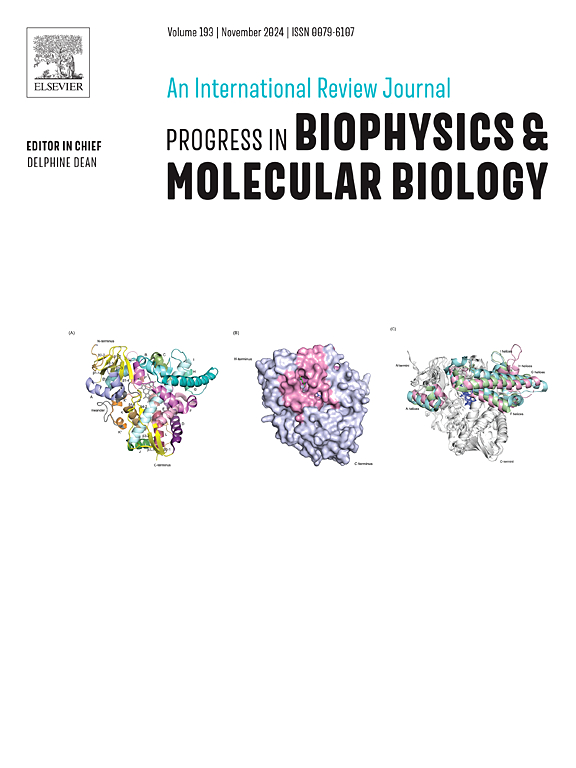Effects of extremely low frequency magnetic fields on animal cancer and DNA damage: A systematic review and meta-analysis
IF 4.5
3区 生物学
Q2 BIOCHEMISTRY & MOLECULAR BIOLOGY
Progress in Biophysics & Molecular Biology
Pub Date : 2024-12-31
DOI:10.1016/j.pbiomolbio.2024.12.005
引用次数: 0
Abstract
The objective of this systematic review and meta-analysis was to assess the carcinogenic effects of extremely low frequency magnetic fields (ELF-MF) by analyzing animal and comet assay studies. We have performed a global meta-analysis on all the animal studies on the relation between ELF-MF and cancer incidence and separate meta-analyses on the incidence of cancer, leukemia, lymphoma, breast cancer, brain cancer and DNA damage assessed with the comet assay. Of the 5145 references identified, 71 studies have been included in our systematic review and 22 studies in our meta-analyses. Our global meta-analysis indicated that ELF-MF exposure had no significant impact on the incidence of cancers in rodents (19 studies, OR = 1.10; 95% CI 0.91–1.32). However, our separate meta-analyses showed that ELF-MF increased the odds of developing leukemia in mice (4 studies, OR = 4.45; 95% CI 1.90–10.38) but not in rats. Our systematic review also suggests that ELF-MF can damage DNA in certain cell types like brain cells. Nevertheless, a meta-analysis on three comet assay studies indicated that ELF-MF did not increase DNA damage in neuroblastoma cells (SMD = −0.08; 95% CI -0.18-0.01). Overall, our results suggest that exposure to ELF-MF does not represent a major hazard for mammals and the carcinogenic effects of these magnetic fields could be limited to leukemia.
极低频磁场对动物癌症和DNA损伤的影响:系统综述和荟萃分析。
本系统综述和荟萃分析的目的是通过分析动物和彗星试验研究来评估极低频磁场(ELF-MF)的致癌作用。我们对所有关于ELF-MF与癌症发病率之间关系的动物研究进行了全球荟萃分析,并对癌症、白血病、淋巴瘤、乳腺癌、脑癌和DNA损伤的发病率进行了单独的荟萃分析。在确定的5145篇文献中,71篇研究被纳入我们的系统综述,22篇研究被纳入我们的荟萃分析。我们的全球荟萃分析表明,ELF-MF暴露对啮齿动物的癌症发病率没有显著影响(19项研究,OR = 1.10;95% ci 0.91-1.32)。然而,我们单独的荟萃分析显示,ELF-MF增加了小鼠发生白血病的几率(4项研究,OR = 4.45;95% CI 1.90-10.38),但在大鼠中没有。我们的系统综述还表明,ELF-MF可以破坏某些细胞类型(如脑细胞)的DNA。然而,对三项彗星试验研究的荟萃分析表明,ELF-MF不会增加神经母细胞瘤细胞的DNA损伤(SMD = -0.08;95% ci -0.18-0.01)。总的来说,我们的研究结果表明,暴露于ELF-MF对哺乳动物并不构成主要危害,这些磁场的致癌作用可能仅限于白血病。
本文章由计算机程序翻译,如有差异,请以英文原文为准。
求助全文
约1分钟内获得全文
求助全文
来源期刊

Progress in Biophysics & Molecular Biology
生物-生化与分子生物学
CiteScore
8.60
自引率
7.90%
发文量
85
审稿时长
85 days
期刊介绍:
Progress in Biophysics & Molecular Biology is an international review journal and covers the ground between the physical and biological sciences since its launch in 1950. It indicates to the physicist the great variety of unsolved problems awaiting attention in biology and medicine. The biologist and biochemist will find that this journal presents new and stimulating ideas and novel approaches to studying and influencing structural and functional properties of the living organism. This journal will be of particular interest to biophysicists, biologists, biochemists, cell physiologists, systems biologists, and molecular biologists.
 求助内容:
求助内容: 应助结果提醒方式:
应助结果提醒方式:


